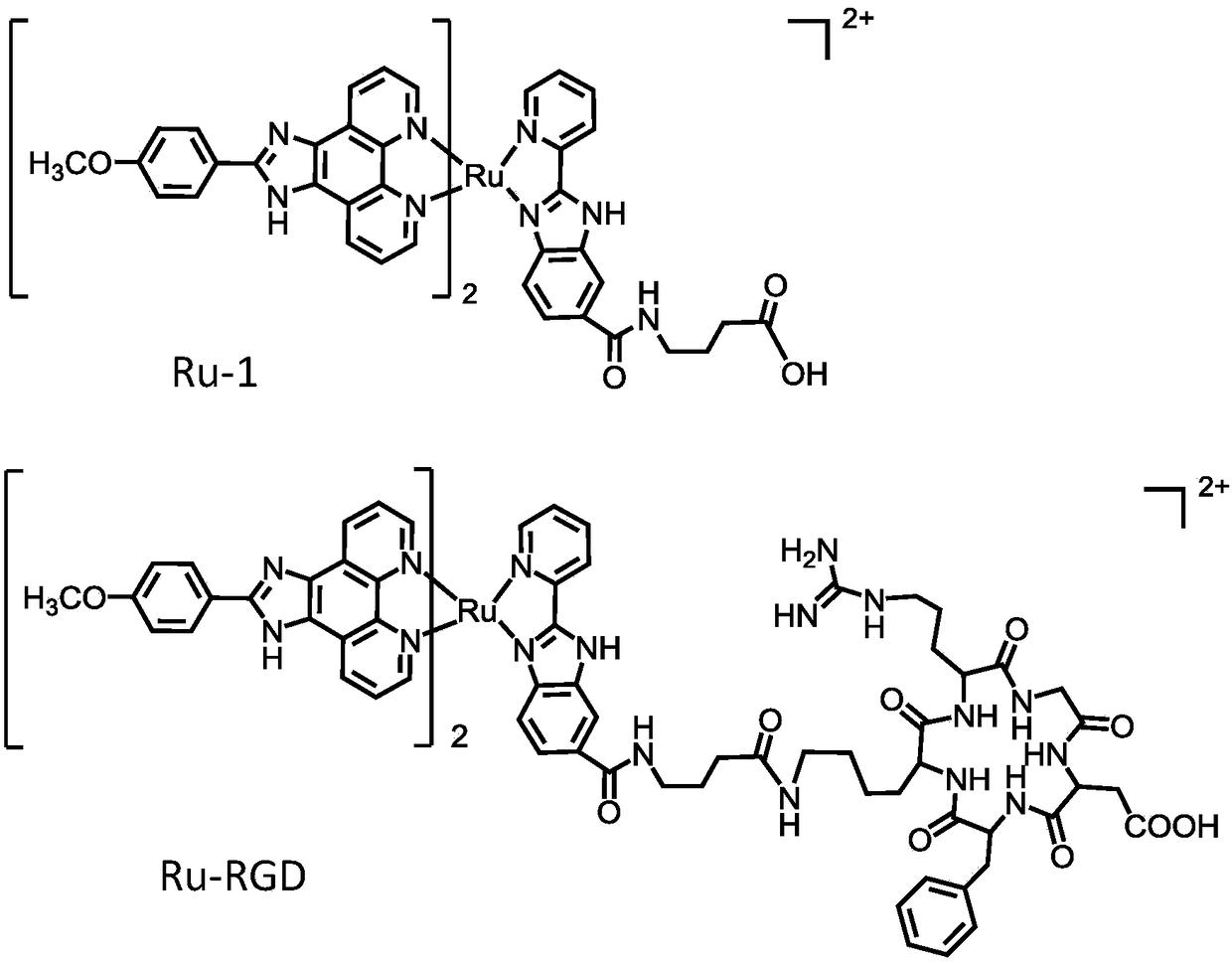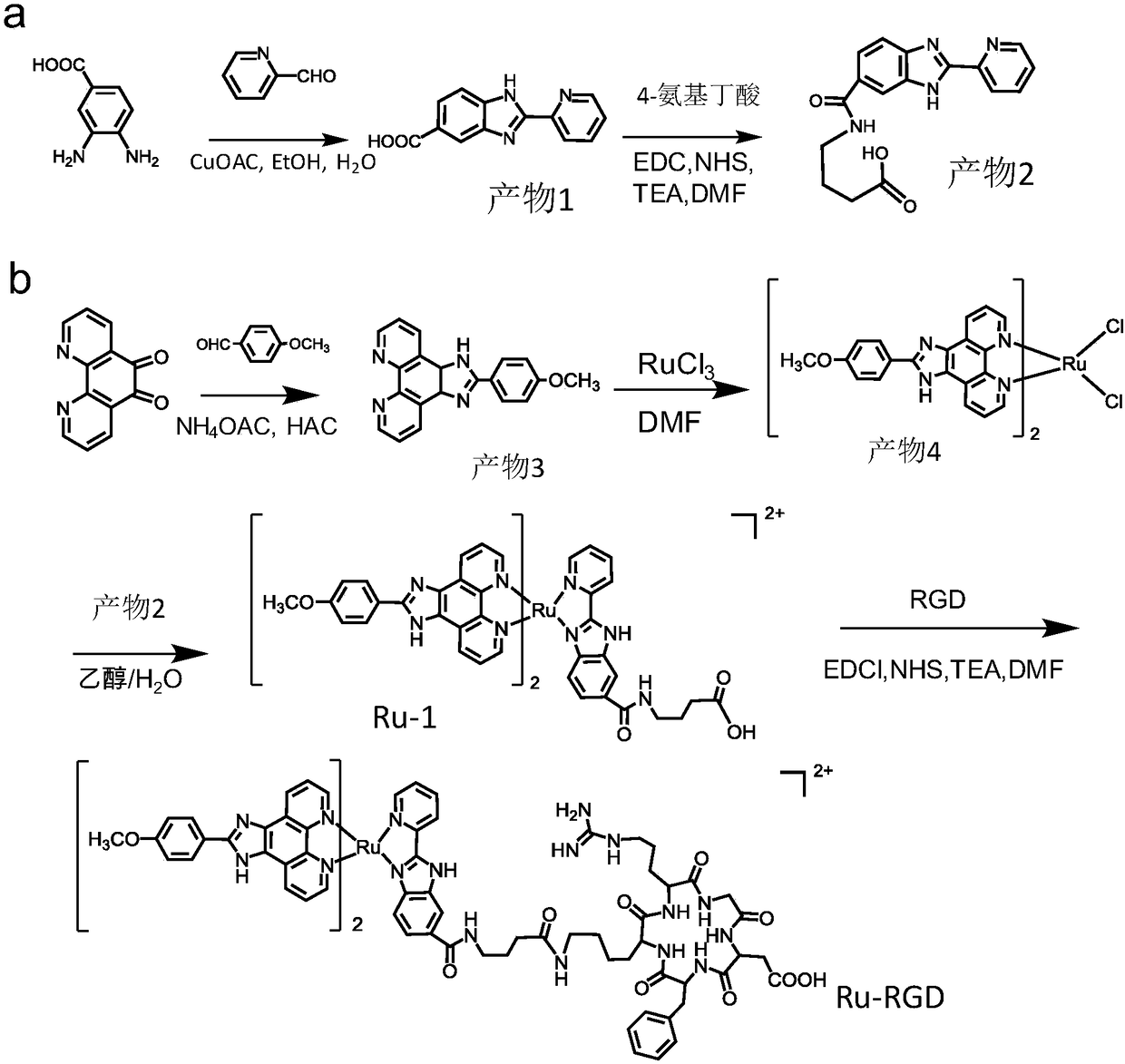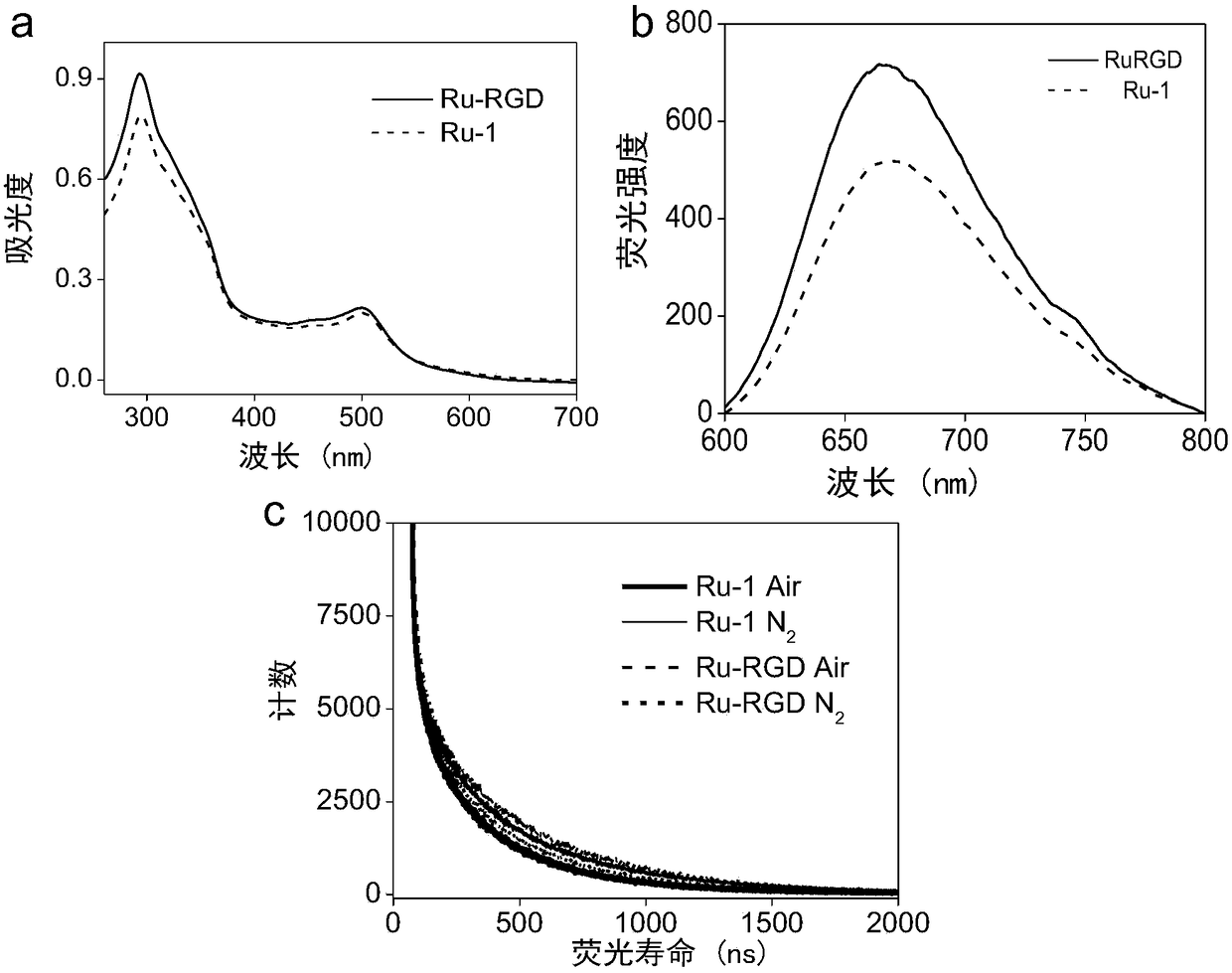Preparation method of two-photon absorption type ruthenium complex and application of ruthenium complex as tumor probe
A two-photon absorption and ruthenium complex technology, applied in the field of medicine, can solve the problems of difficult deep tissue imaging, difficult tumor tissue imaging, poor penetration of phosphorescent probes, etc., and achieve the effect of reducing synthesis time and consumption
- Summary
- Abstract
- Description
- Claims
- Application Information
AI Technical Summary
Problems solved by technology
Method used
Image
Examples
Embodiment 1
[0087] Preparation and characterization of embodiment 1 ruthenium complex
[0088] (1) Synthesis of product 1: as figure 2 As shown in a, take 4.56g (30mmol) of 3,4-diaminobenzoic acid and suspend it in 50mL of absolute ethanol in a single-necked flask. After dissolving 5.5 g (30 mmol) of copper acetate powder in 50 mL of pure water, it was added to the above-mentioned flask and fully stirred until it became a dark brown solid. After 2.68 g (25 mmol) of pyridine-2-carboxaldehyde was added dropwise within 20 min using a separatory funnel, the reaction temperature was heated to 80° C. under reflux and stirred for 2 h. The obtained dark brown solid was suction filtered, washed with pure water and dispersed in 100 mL of ethanol. To remove copper ions, add 7.20 g (30 mmol) of Na 2 S·9H 2The O solid was reacted with the above solution for 2 h, and then the black solid was removed by suction filtration. The obtained filtrate was concentrated to 30 mL, then hydrochloric acid sol...
Embodiment 2
[0094] Example 2 Application of two-photon luminescence imaging of ruthenium complexes
[0095] In this example, the relevant optical properties of the ruthenium complex synthesized in Example 1 were measured, as the basis for its application in the field of bioluminescent imaging. Such as image 3 Shown: image 3 In a, the UV-Vis absorption spectrum of the ruthenium(II) complex in PBS solution shows two absorption peaks, and the stronger absorption peak at 270-382nm is the ligand interior (IL) π→π * transition, and the absorption peak at 407~547nm is the metal center-ligand transition (MLCT) dπ(Ru)→π * (ligand). When the PBS solution of the ruthenium(II) complex is excited at λmax=500nm at the MLCT absorption section, a deep red phosphorescence of 3MLCT is emitted at λmax=670nm (Fig. 3b). We further determined the fluorescence lifetime of the ruthenium complex ( image 3 c), the fluorescence lifetimes of the synthesized polypyridine ruthenium (II) complexes Ru-1 and Ru-R...
Embodiment 3
[0108] The antitumor mechanism of embodiment 3 ruthenium complexes
[0109] 1. The cell viability was determined by MTT method:
[0110] The cell culture method refers to Example 2.
[0111] Take the logarithmic growth of the above-mentioned various cells (CaSki, SiHa, HeLa, MCF-7 tumor cells, Ect1 / E6E7 normal human cervical immortalized squamous cells, and L02 normal liver cells), and divide them into 2×10 4 The concentration of cells / mL was inoculated in a 96-well plate, and the cells were placed in a 37°C cell culture incubator in DMEM medium. After incubating for 24 hours until the cells grow attached to the wall, the drug to be tested (Ru-1, Ru-RGD or cisplatin) was added at a concentration gradient of 5-80 μM. After incubation for 72 hours, 20 μL of 5 mg / mL MTT solution was added to continue incubation for 4 hours. After the end, aspirate the medium, add 150 μL dimethyl sulfoxide (DMSO), measure the absorbance with 570 nm, and calculate the half inhibitory concentratio...
PUM
 Login to View More
Login to View More Abstract
Description
Claims
Application Information
 Login to View More
Login to View More - Generate Ideas
- Intellectual Property
- Life Sciences
- Materials
- Tech Scout
- Unparalleled Data Quality
- Higher Quality Content
- 60% Fewer Hallucinations
Browse by: Latest US Patents, China's latest patents, Technical Efficacy Thesaurus, Application Domain, Technology Topic, Popular Technical Reports.
© 2025 PatSnap. All rights reserved.Legal|Privacy policy|Modern Slavery Act Transparency Statement|Sitemap|About US| Contact US: help@patsnap.com



